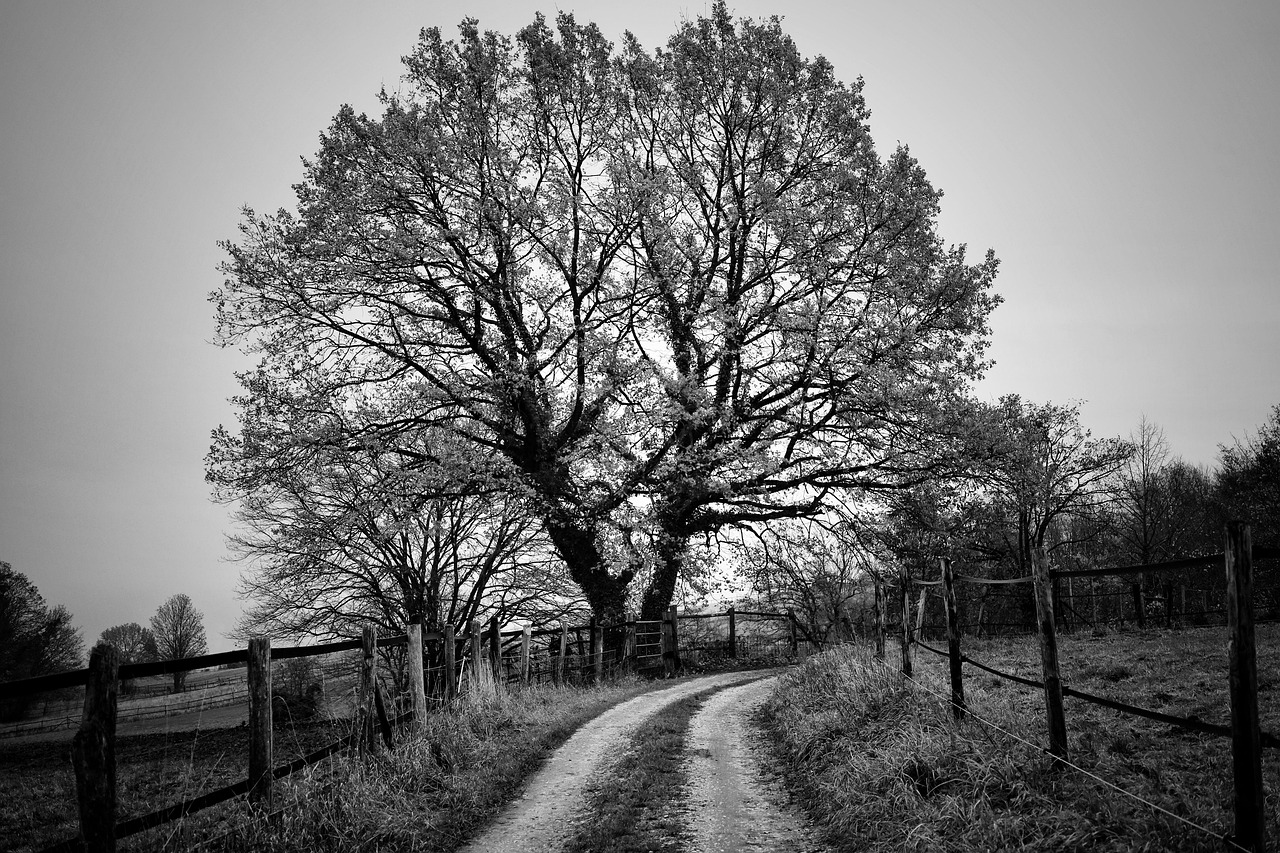“When the tree falls” practically means that when a significant event occurs, it creates a ripple effect, impacting various aspects of life. This phrase often serves as a metaphor for change, loss, or realization, prompting reflection on the consequences that follow.
Understanding the Metaphor
The phrase “when the tree falls” draws on the imagery of a large tree collapsing in a forest. It symbolizes moments of change that can be both profound and transformative. In many cultures, trees represent stability and life. Therefore, when a tree falls, it signifies the loss of something substantial, leading to various interpretations depending on the context.

In practical terms, this metaphor can refer to personal experiences, societal shifts, or environmental changes. The implications of such an event can be far-reaching. For example, when a person undergoes a significant life change, such as losing a job or ending a relationship, it can lead to a series of reactions and adaptations in their life and the lives of those around them.
Contextual Interpretations
Understanding the phrase requires examining it through different lenses. Here are some contexts in which “when the tree falls” can be applied:
- Personal Growth: A significant life event can catalyze personal development. For instance, losing a loved one may prompt an individual to reevaluate their priorities.
- Societal Change: Events like political upheaval or social movements can radically alter societal norms and expectations.
- Environmental Impact: The falling of a tree in nature can lead to changes in the ecosystem, highlighting interconnectedness.
Practical Applications
The phrase serves as a reminder of the consequences that follow significant events. It encourages individuals to reflect on their surroundings and consider how various elements are interconnected. In practical applications, this metaphor can be seen in several areas:

- Emotional Resilience: Understanding that changes are inevitable can help individuals build resilience and adapt more effectively to life’s challenges.
- Decision Making: Awareness of potential consequences encourages thoughtful decision-making in personal and professional settings.
- Community Dynamics: Recognizing how one person’s actions can affect the community fosters a sense of responsibility and accountability.
The Ripple Effect
One of the key aspects of “when the tree falls” is the ripple effect it creates. Just like the sound of a falling tree echoes through the forest, significant life events resonate through relationships and communities. Understanding this effect can lead to a greater appreciation for the interconnectedness of our actions.
For example, if a prominent leader in a community steps down from their position, it may not only impact their immediate circle but also influence local policies and community morale. The initial event creates waves that touch many lives in unforeseen ways.
Key Takeaways
The following table summarizes some important points regarding the metaphor of “when the tree falls”:

| Aspect | Description |
|---|---|
| Symbolism | Represents significant change or loss. |
| Impact | Affects personal and community dynamics. |
| Reflection | Encourages introspection on life choices. |
| Interconnectedness | Highlights how events influence one another. |
In conclusion, the phrase “when the tree falls” serves as a profound metaphor for understanding change in various contexts. By recognizing its implications, individuals can better navigate the complexities of life and appreciate the interconnectedness of their actions and experiences.
The Psychological Impact of Change
When contemplating the metaphor of “when the tree falls,” it is essential to recognize the psychological impact that significant changes can have on individuals. Change, whether positive or negative, often evokes a range of emotional responses. Understanding these responses can help individuals navigate their feelings and reactions effectively.
Emotional Responses to Change
Change can trigger various emotional responses. Here are some common reactions people may experience:
- Shock: The initial reaction to unexpected changes can be shock or disbelief. This response is often accompanied by feelings of confusion.
- Grief: Loss, whether it be of a relationship, job, or opportunity, can lead to grief. It is crucial to allow oneself to feel this emotion fully.
- Fear: Uncertainty about the future often breeds fear. People may worry about their ability to cope with new circumstances.
- Acceptance: Over time, many individuals reach a stage of acceptance. They begin to adapt to the new reality.
Recognizing and naming these emotional responses is the first step toward processing them effectively. This acknowledgment can lead to healthier coping mechanisms.

Coping Mechanisms
Developing effective coping mechanisms is vital during times of change. Here are some strategies that may help:
- Seek Support: Connecting with friends, family, or support groups can provide comfort and understanding.
- Practice Mindfulness: Mindfulness techniques such as meditation or deep breathing can help ground individuals in the present moment.
- Establish Routines: Creating new routines can provide a sense of stability amidst chaos.
- Set Small Goals: Focusing on achievable goals can create a sense of accomplishment and progress.
The Role of Community in Navigating Change
The role of community becomes paramount when discussing the impact of significant changes. Communities often serve as support systems during difficult transitions. The phrase “when the tree falls” highlights how one person’s experience can resonate throughout their community.
Community Response to Change
Communities respond to significant changes in various ways. Some key aspects include:
- Collective Grieving: When a community experiences loss, such as the passing of a beloved leader, collective grieving can occur. This shared experience fosters unity and support.
- Resource Sharing: Communities often come together to share resources during challenging times, such as food banks or support programs.
- Advocacy and Action: Significant changes can lead communities to advocate for change or improvement, particularly in social or political contexts.
The Importance of Communication
Effective communication within a community is essential during times of change. Here are some reasons why it matters:
- Transparency: Open communication fosters trust and transparency, helping community members feel informed and included.
- Conflict Resolution: Clear communication can aid in resolving conflicts that may arise during transitions.
- Shared Vision: A unified message helps establish a shared vision for the future, guiding actions and decisions.
The Environmental Perspective
The metaphor of “when the tree falls” also holds significant meaning from an environmental perspective. The falling of a tree in nature symbolizes ecological changes that can have far-reaching effects on ecosystems.
Ecosystem Dynamics
The impact of a fallen tree extends beyond its immediate surroundings. Here are some ecological consequences:
- Biodiversity Increase: A fallen tree creates a space for new plants to grow, which can enhance biodiversity in the area.
- Nutrient Recycling: As the tree decomposes, it enriches the soil with nutrients that support new growth.
- Habitat Creation: The fallen tree provides habitat for various species, including insects and small mammals.
This environmental perspective underscores the interconnectedness of all living things and the cyclical nature of life. Understanding these dynamics can promote greater appreciation for conservation efforts and sustainable practices.
Human Impact on Ecosystems
Human actions often influence how ecosystems respond to change. Factors such as deforestation and urban development can disrupt natural processes. Here are some considerations related to human impact:
| Human Activity | Ecosystem Impact |
|---|---|
| Deforestation | Reduces biodiversity and disrupts habitats. |
| Pollution | Affects soil and water quality, harming plant and animal life. |
| Urbanization | Increases habitat fragmentation, limiting wildlife movement. |
Understanding both the psychological and environmental implications of “when the tree falls” allows individuals and communities to reflect on their actions and responsibilities in a rapidly changing world.
Personal Reflections on Change
When considering the phrase “when the tree falls,” it is important to reflect on personal experiences with change. Each individual has a unique relationship with change, shaped by their life circumstances and perspectives. These reflections can offer valuable insights into how one can better navigate similar situations in the future.
Recognizing Personal Change
Personal change can manifest in various forms, such as changes in career, relationships, or health. Recognizing these changes is the first step toward understanding their impact. Here are some types of personal changes:
- Career Transitions: Changing jobs or pursuing new career paths can lead to both excitement and anxiety.
- Relationship Changes: Ending or beginning relationships can significantly affect one’s emotional state and social dynamics.
- Health Challenges: A diagnosis or health scare can prompt a reevaluation of lifestyle choices and priorities.
Understanding the triggers for these changes helps individuals prepare for and respond to the associated challenges.
The Process of Adaptation
The adaptation process following a major change often involves several stages. Here are the typical stages individuals may go through:
- Denial: Initially, some individuals may deny the reality of the change, resisting acceptance.
- Anger: Feelings of frustration or anger may arise as one grapples with the implications of the change.
- Bargaining: Individuals may find themselves attempting to negotiate a way to revert to their previous circumstances.
- Depression: A period of sadness or withdrawal is common as individuals process their feelings.
- Acceptance: Ultimately, reaching a stage of acceptance allows individuals to move forward and embrace new realities.
Recognizing these stages can provide comfort, as individuals understand they are not alone in their experiences.
The Impact of Cultural Perspectives
Cultural perspectives play a significant role in how people interpret and respond to change. Different cultures have varying beliefs about change, loss, and resilience. Understanding these perspectives can broaden one’s view on navigating personal challenges.
Cultural Attitudes Towards Change
Here are some cultural attitudes that influence how change is perceived:
- Collectivism vs. Individualism: In collectivist cultures, community support is emphasized during times of change, whereas individualistic cultures may promote self-reliance.
- Spiritual Beliefs: Some cultures view change as part of a divine plan, fostering acceptance and resilience.
- Rituals and Traditions: Many cultures have rituals to mark significant changes, helping individuals process emotions and transitions collectively.
Acknowledging these diverse perspectives can enhance empathy and understanding in cross-cultural interactions.
The Role of Storytelling
Storytelling serves as a powerful tool for sharing experiences related to change. It allows individuals to convey their feelings and insights, fostering connection and understanding among others. Here are some benefits of storytelling during times of change:
- Validation of Emotions: Sharing stories can help validate feelings, as others may relate to similar experiences.
- Community Building: Storytelling creates bonds among individuals facing similar challenges, promoting a sense of belonging.
- Lessons Learned: Sharing experiences can provide valuable lessons for others navigating their own changes.
The Influence of Resilience
Resilience is another critical aspect when discussing the implications of “when the tree falls.” It refers to the ability to bounce back from adversity and adapt positively. Building resilience empowers individuals to face challenges head-on.
Characteristics of Resilient Individuals
Resilient individuals often share common traits that enable them to cope effectively with change. Some characteristics include:
- Optimism: Maintaining a positive outlook helps resilient individuals envision better outcomes even in the face of setbacks.
- Flexibility: The ability to adapt to new circumstances allows resilient individuals to navigate change more smoothly.
- Problem-Solving Skills: Resilient people tend to approach challenges with a solutions-focused mindset, seeking practical ways to overcome obstacles.
Building Resilience
There are several strategies individuals can adopt to build resilience:
- Cultivate Connections: Maintaining strong relationships with friends and family provides support during challenging times.
- Practice Self-Care: Prioritizing physical and mental well-being helps individuals recharge and cope better with stress.
- Embrace Change: Viewing change as an opportunity for growth rather than a setback can enhance resilience.
Cultivating resilience not only helps individuals cope with current changes but also prepares them for future challenges. Understanding the multifaceted nature of change through personal reflection, cultural perspectives, storytelling, and resilience offers a comprehensive approach to navigating life’s transitions.
Practical Applications of “When the Tree Falls”
Understanding the metaphor of “when the tree falls” extends beyond personal reflection and resilience. It also has practical applications in various fields, including education, business, and community development. Recognizing how change impacts these areas can equip individuals and organizations with strategies to navigate transitions effectively.
Education and Personal Development
In educational settings, the concept of change is often intertwined with learning processes. Students frequently face changes that challenge their adaptability and resilience. Here are some ways educators can apply the metaphor:
- Encouraging Growth Mindsets: Educators can foster a growth mindset by encouraging students to view challenges as opportunities for learning rather than obstacles.
- Building Supportive Environments: Creating an environment where students feel safe to express their emotions regarding change can enhance their coping strategies.
- Teaching Coping Skills: Incorporating lessons on emotional intelligence and resilience into the curriculum can equip students with tools to handle life’s changes.
Business and Organizational Change
In the business world, organizations frequently undergo significant changes, such as restructuring, merging, or adopting new technologies. The metaphor of “when the tree falls” can guide leaders in managing these transitions:
- Transparent Communication: Keeping employees informed about changes helps build trust and reduces anxiety.
- Inclusive Decision-Making: Involving team members in discussions about change encourages buy-in and fosters a sense of ownership.
- Training Programs: Offering training helps employees develop new skills needed to adapt to changes in the workplace.
Community Resilience Initiatives
Communities can benefit from initiatives aimed at building resilience in the face of change. By applying the insights gained from “when the tree falls,” communities can create supportive networks:
- Neighborhood Support Groups: Establishing groups where community members can share experiences and resources fosters a sense of belonging.
- Crisis Response Plans: Developing plans to address potential crises prepares communities for sudden changes and disruptions.
- Engaging Local Leaders: Mobilizing local leaders to advocate for community needs during transitions ensures that voices are heard and addressed.
Final Thoughts
The phrase “when the tree falls” serves as a powerful metaphor for understanding the complexities of change in our lives and communities. It encapsulates the emotional, psychological, and social impacts that significant events can have on individuals and groups. By recognizing the interconnectedness of our experiences, we can better navigate life’s inevitable transitions.
Key takeaways from this exploration include:
- The Importance of Reflection: Taking time to reflect on personal experiences with change helps individuals understand their responses and grow from them.
- Cultural Perspectives Matter: Different cultural attitudes toward change can influence how individuals cope, highlighting the value of empathy and understanding.
- Resilience is Key: Building resilience through support networks, self-care, and adaptability prepares individuals for future challenges.
- Practical Applications Exist: The metaphor offers valuable insights for educators, business leaders, and community organizers in managing change effectively.
As we move through life, it is essential to embrace the lessons learned from the metaphor of “when the tree falls.” By fostering connections, adapting to new circumstances, and supporting one another, we can cultivate a more resilient society ready to face whatever changes may come our way.
